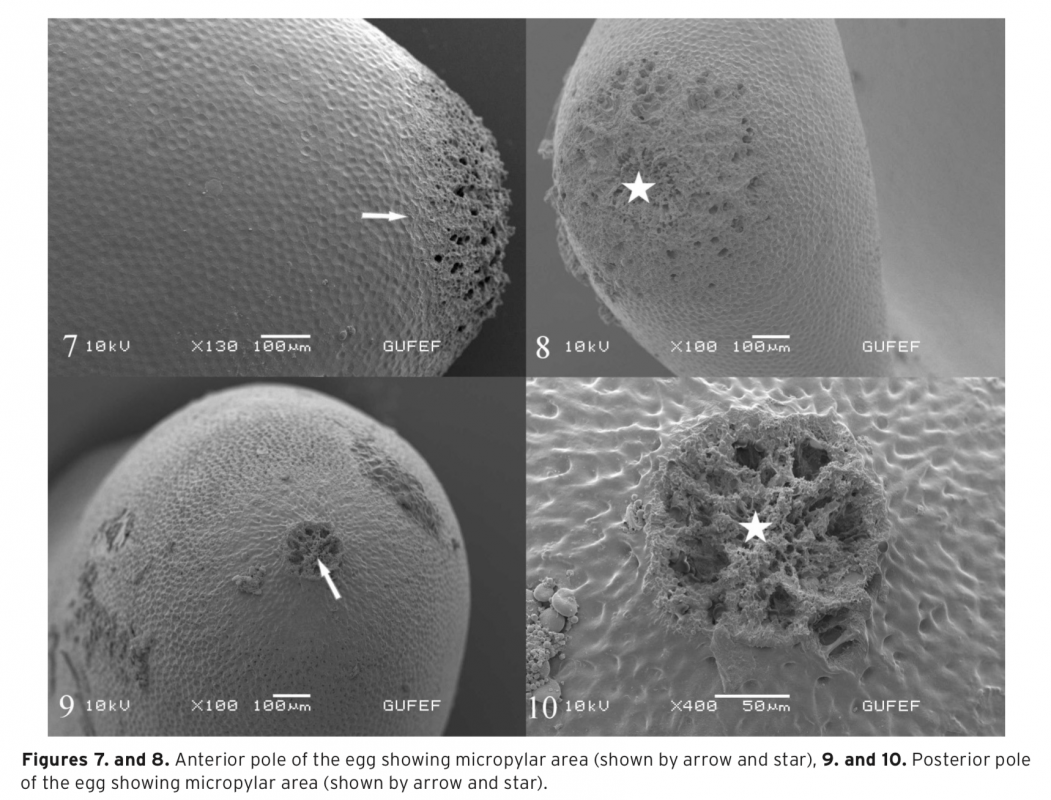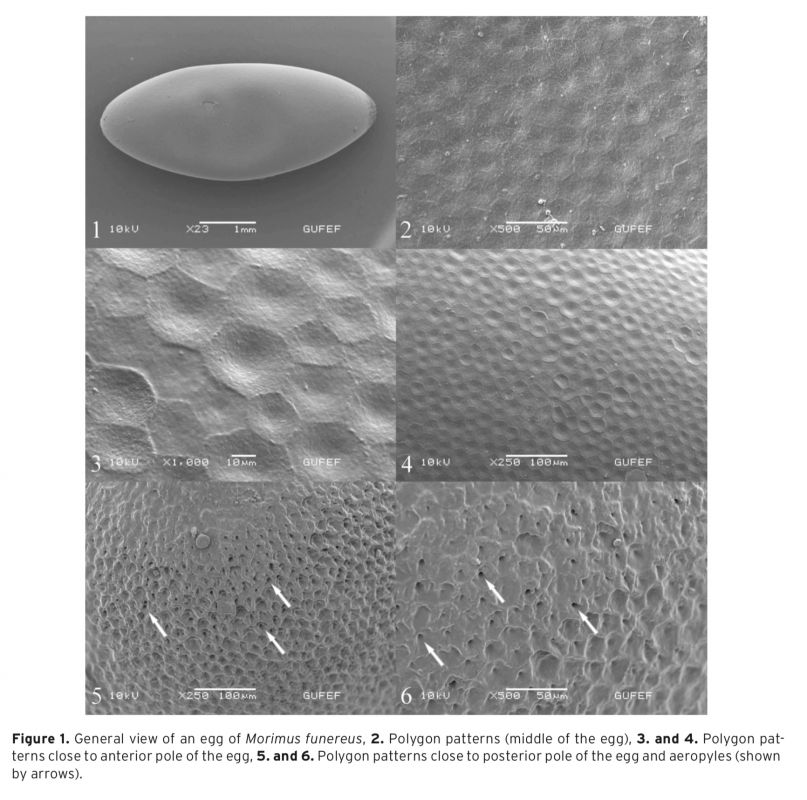In this study, the egg chorion of Morimus funereus Mulsant, 1862 is examined. M. funereus, xylophagus and saproxylic species, accelerate the nutrient transformation of forests by separating dead trees. This species is categorised in “VU (Vulnerable)” on the IUCN Red List of Threatened Species and also included in European Habitats Directive. A female specimen of M. funereus was collected from Eskişehir in 2012. The specimen was laid in a laboratory environment. The eggs are whitish cream, oval-fusiform in shape. Polygon patterns (pentagons and hexagons) are visible on the egg surface on SEM images. Two micropyles, one at the anterior pole and the other at the posterior pole, occur in the egg. The micropylar areas are spongiform with pores of various sizes. Chorionic structure and micropylar area of the egg are quite different from other Cerambycidaespecies eggs. Egg surface morphology of M. funereus can be used as basis for further studies and as a tool to compare other species of Morimus.
Bu çalışmada, Morimus funereus Mulsant, 1862’un yumurta koryonu incelendi. Ksilofagus ve saproksil tür olan M. funereus, ölü ağaçları ayırarak ormanların besin dönüşümünü hızlandırır. Bu tür IUCN Nesli Tükenme Tehlikesi Altında Olan Türlerin Kırmızı Listesi’nde “VU (Hassas) kategorisinde yer almaktadır ve ayrıca Avrupa Habitat Direktifi’nde de yer almaktadır. M. funereus bir dişi örneği Eskişehir’den 2012 yılında toplanmıştır. Örnek laboratuvar ortamında yumurtlamıştır. Yumurtalar beyazımsı krem, oval-iğsi şekildedir. Yumurta yüzeyinin SEM görüntülerinde poligon desenler (beşgenler ve altıgenler) görülmektedir. Yumurtada biri anterior diğeri posteriorda olmak üzere iki mikropil yapısı bulunmaktadır. Mikropil bölgeleri, çeşitli büyüklükte delikleri olan süngerimsi şekildedir. Yumurtanın koryon yapısı ve mikropil bölgesi diğer Cerambycidae türlerinin yumurtalarından oldukça farklıdır. M. funereus’un yumurta yüzey morfolojisi ilerideki çalışmalar için temel olabilir ve Morimus türlerini karşılaştırmada kullanılabilir


Download Article in PDF (2.4 MB)